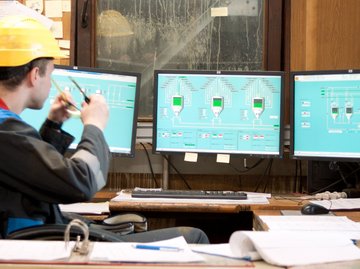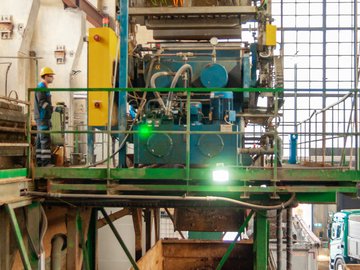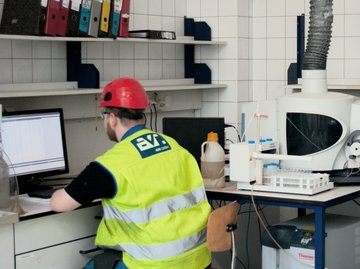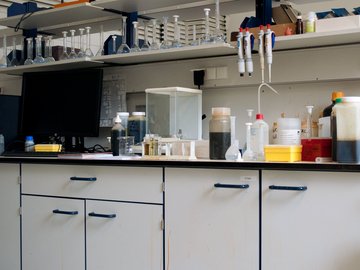
Waste management and resource management
In the field of waste management and resource management, our company deals with the collection and treatment of mainly liquid waste from all branches of industry, specialising in the recovery of heavy metals from waste water from galvanisers and hot-dip galvanisers.
Our operating facility essentially consists of a CP plant, in which industrial wastewater is treated chemically and physically, and an intermediate store for waste bound for landfill sites.
CP-Facility
Our CP facility is specially designed for the treatment of polluted waste water. Contaminants such as acids and acid mixtures, concentrates containing metal salts, emulsions and oil-water mixes are split, separated and neutralised.



In addition to a suitably large tank store and various separation options into liquid and solid phases, the following treatment stages are available for these materials:
- Emulsion splitting
- Oxidation stage
- Reduction stage
- Neutralisation
- Precipitation stage
- Chamber filter press
- Settling pond
This serves the purpose of separating and concentrating the valuable substances and/or pollutants contained in liquid waste. Subsequently, metal-containing filter cakes and sludges, iron and zinc pickles as well as waste oil are transferred to specific recycling plants for material recovery. Separated pollutants are passed on to incineration plants for thermal treatment or, after appropriate inertisation, to landfills. The treated wastewater complies with the Austrian Wastewater Emission Ordinance for waste treatment plants and can thus be discharged into the public sewer system.
The fundamental difference between our CP facility and comparable facilities is that we substitute the necessary new chemicals for the treatment with waste. Materials generated by our customers for disposal are therefore put to good use in our facility for the treatment of other waste. This results not only in cost savings for our customers, but also in a considerable reduction in the consumption of new chemicals, while minimising the amounts of sludge produced. This is how we make a contribution to protecting valuable raw materials and scarce landfill resources!
Chemical Analysis
Before each initial delivery of waste, the customer sends a sample to our laboratory. The waste is fully analysed to establish whether the material can be treated in one of the facility areas or put into interim storage.
For all subsequent deliveries, an identification analysis will be performed before acceptance to ensure that the material is the same as the material presented for the initial analysis and can therefore be brought into the facility.
The waste is only unloaded once the results of the incoming analysis are available and have been approved by the chemist.



In accordance with our corporate philosophy, our laboratory is a central hub of the facility. Its main task is to control and monitor the production process:
- Analytical assessment of initial samples
- Incoming check of waste
- Developement of formulas for the CP facility
- Supported monitoring of how treatment is progressing in the individual facility sections
- Analytical assessment of the waste water produced
- Outgoing check of waste and of any residual materials produced during the treatment